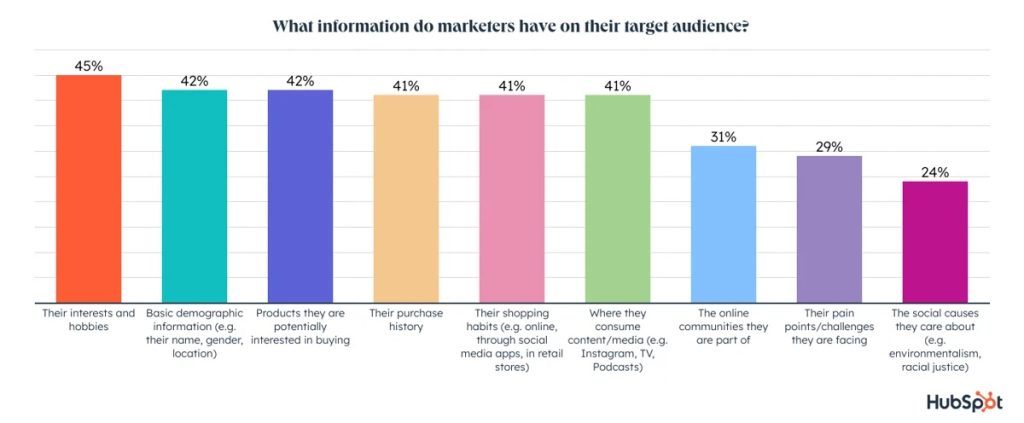In today’s digital world, having a successful website is essential for any SaaS business. With over one billion websites in existence, it can be difficult to stand out and make an impact on your target audience. That’s why conducting user research before building your website is so important.
According to recent studies, 53% of mobile website visitors will leave if a webpage doesn’t load within three seconds or less. This means that the structure of your site needs to be carefully planned and optimized for usability. In this article, we’ll explore the importance of user research when structuring a SaaS website, as well as best practices for creating an intuitive user experience.
What is User Research?
User research is the process of gathering information about a target audience to better understand their needs, behavior, and preferences. This type of research helps identify potential problems and opportunities which can then be addressed in the design process. By conducting user research before building a website, you can ensure that users will have an intuitive experience navigating your site.
User research process
The user research process typically involves a combination of quantitative and generative research. Quantitative research is data-driven and utilizes surveys, analytics, and other forms of hard data to collect insights about your target audience. Generative research is more focused on understanding the user’s motivations, goals, and behaviors by studying their interactions with products.
Role of User Research in SaaS Website Planning
User research plays a critical role in the planning of any SaaS (Software as a Service) website. It involves gathering information about your target users, their needs, preferences, and behaviors in order to design a website that meets their requirements and expectations. User research can help with the planning of a Saas website by:
- Helping Identify User Needs
- Improving User Experience
- Optimizing Conversions
- Reducing Development Costs
Identify Your Target Audience
Understanding your target audience is essential for creating an effective SaaS website. Only 42% of marketers know the basic demographic information (age, gender, location) of their audience. Without this information, it’s impossible to create a website that resonates with users and meets their needs. User research can help identify the characteristics of your target audience as well as determine what types of content they are likely to engage with.
The importance of a well-defined target audience
A well-defined target audience is crucial for any marketing campaign. It ensures that the message is delivered to the right people, resulting in higher engagement and a better ROI. Here’s why it’s important:
- Demographics: This includes things such as age, gender, education level, income, etc.
- Psychographics: This refers to personality traits, values, interests, and lifestyles.
- Behavioral patterns: This includes consumer behavior, such as purchasing habits, brand loyalty, and product usage.
How to Conduct Audience Research?
Conducting audience research is crucial to understanding your target market. Surveys allow you to gather data from a large number of people, interviews provide in-depth insights from individual participants, and focus groups facilitate group discussions that can reveal unique perspectives and ideas.
Enhancing User Experience (UX)
Improving the user experience (UX) is critical when designing a SaaS website. Users want a website that is easy to navigate, has an intuitive design, and is visually appealing. To achieve this, several key elements need to be present on the website.
1. Intuitive Navigation
Firstly, intuitive navigation is essential. The website should have a clear navigation bar with labels that are easy to understand. Users should be able to find what they are looking for quickly and easily.
2. Responsive Design
Secondly, responsive design is crucial. The website should be optimized for different devices, such as desktops, tablets, and mobile phones. This ensures that users can access the website from any device and have a seamless experience.
3. Consistent Layout And Styling
Thirdly, consistent layout and styling are important. The website should have a consistent design language with a clear hierarchy of information and visual elements.
How User Research Informs UX Decisions?
User research is a critical part of creating a user-friendly SaaS website. It involves identifying user preferences and addressing pain points. User research can be conducted through interviews, surveys, and usability testing. The insights gained from user research help inform UX decisions and ensure that the website meets the needs of its users.
Prioritizing Features and Content
Prioritizing features and content is crucial when planning your SaaS website structure. Determining essential features and core functionality lays the foundation for your website, ensuring that it meets the needs of your users. Value-added features can then be added to enhance the user experience.
Prioritizing content is equally important in ensuring that users can easily access the information they need. Understanding user information needs is key to creating a content hierarchy that highlights the most important information first. By prioritizing features and content, you can create a website that not only meets the needs of your users but also helps to drive business success.
Reducing Bounce Rates and Increasing Conversions
User research plays a crucial role in reducing bounce rates and increasing conversions on websites. By understanding the needs, preferences, and behavior of target users, website owners can create a more effective structure that meets their expectations and encourages them to stay longer on the site.
One of the most important strategies for reducing bounce rates is to have clear calls-to-action (CTAs) that guide users toward taking action. Additionally, engaging content that speaks to users’ interests and pain points can keep them engaged and lead to higher conversion rates. Conducting user research can uncover insights that inform these strategies, ultimately leading to a more successful website with improved user engagement.
Improving Customer Satisfaction and Loyalty
User research is an essential tool for improving customer satisfaction and loyalty. By gathering insights into customer needs, behavior, and preferences, businesses can create products and services that meet their customers’ expectations. User research helps companies identify pain points and areas of improvement, leading to products that better match the needs of their users.
This results in more satisfied customers, which in turn fosters loyalty. Strategies such as personalization and creating user feedback mechanisms also help build customer loyalty by making customers feel heard and valued. Overall, user research is a crucial part of any business that wants to improve customer satisfaction and increase loyalty.
Guiding Continuous Improvement
User research is a vital component of any product design process, and it plays a crucial role in guiding continuous improvement. By monitoring user behavior and feedback, designers can gain valuable insights into what works and what doesn’t, which can be used to inform future design decisions.
This iterative process allows for constant refinement and optimization of the product, ensuring that it remains relevant and effective. In addition to direct user feedback, web analytics, and usability testing can provide further insights into user behavior, enabling designers to make informed decisions based on real data rather than assumptions or guesswork.
Saving Time and Resources
Saving time and resources is a top priority for businesses and organizations of all sizes. One way to achieve this goal is through the use of user research. By conducting user research, businesses can gain valuable insights into their customers’ needs and behaviors, allowing them to make more informed decisions when it comes to marketing strategies.
This can lead to significant cost savings by reducing the need for trial and error. In addition, user research can help inform development priorities by identifying which features or improvements will have the greatest impact on user satisfaction. Ultimately, investing in user research can pay off in both time and resources saved, as well as increased customer satisfaction and loyalty.
Conclusion
User research is essential for planning an effective website structure that ensures a positive user experience. By taking the time to understand your target audience, you can create an intuitive website design that meets their needs and increases conversions, customer satisfaction, and loyalty. And by tracking user behavior and feedback over time, user research can help guide ongoing improvements for your SaaS website.
Frequently Asked Questions (FAQs)
What is User Research, and Why is it Important for SaaS Website Planning?
User research is the process of gathering information about a target audience to better understand their needs, behavior, and preferences. By conducting user research before building a website, you can ensure that users will have an intuitive experience navigating your site. This helps reduce bounce rates and increase conversion rates which improves customer satisfaction and loyalty.
How Do You Conduct Audience Research for SaaS Website Planning?
When conducting user research for SaaS website planning, you should start by identifying your target audience. This includes understanding their demographics, psychographics, and behavioral patterns. Once you’ve identified the target audience, you can then conduct surveys, interviews, and focus groups to gather data about user preferences and pain points. This information can be used to inform the website’s structure and content.
How Can User Research Help Reduce Bounce Rates and Increase Conversions?
User research can help reduce bounce rates and increase conversions by helping you identify user preferences and pain points. This information can be used to improve the website’s navigation, design, content hierarchy, and calls-to-action (CTAs). User research can also help identify strategies for fostering customer loyalty, such as personalization and feedback mechanisms.
How Does User Research Contribute to Customer Satisfaction and Loyalty?
User research can help improve customer satisfaction and loyalty by providing insights into user preferences and behavior. This information can be used to inform website design, content hierarchy, CTA placement, and other strategies for fostering loyalty. Additionally, user research helps guide the continuous improvement of the website by monitoring user feedback over time.



